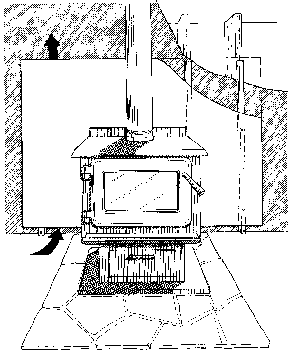See the attached link to test your knowledge of wood stoves:
http://home.howstuffworks.com/home-improvement/heating-and-cooling/wood-stove-quiz.htm
http://home.howstuffworks.com/home-improvement/heating-and-cooling/wood-stove-quiz.htm
# 10 was dangerously wrong.
The question was "What is one logical way to reduce clearances for wood stove installations?".
They said the correct answer was "You can add non-combustible material like brick to a wall".
Just adding fireproof material like brick to a combustible wall does not reduce the clearances to the wall.
had a problem with that as well, a "brick wall" with no convective airspace is NOT an effective method of reducing clearance. a "wall shield" with a convective 1 inch airspace is a more effective method and may allow a much closer clearance
Still, that only applies to unlisted stoves or to stoves that specifically allow for the heat shield reduction and that is rare. There is rarely a reduction for even properly constructed wall shields.

Here's what we have for regulations on wall mounted heat shielding in Canada. http://woodheat.org/clearances.html
The important thing to note is that the shielding needs an open air space above and below the shielding, as well as behind it, to allow plenty of air flow. So in other words, even if you build a brick wall with an 1" air space behind it between the bricks and the wall it wouldn't meet regulations here because there would be no air flow space at the bottom of the brick wall to allow the air to flow under.
Note the arrows in the diagram indicating airflow.


